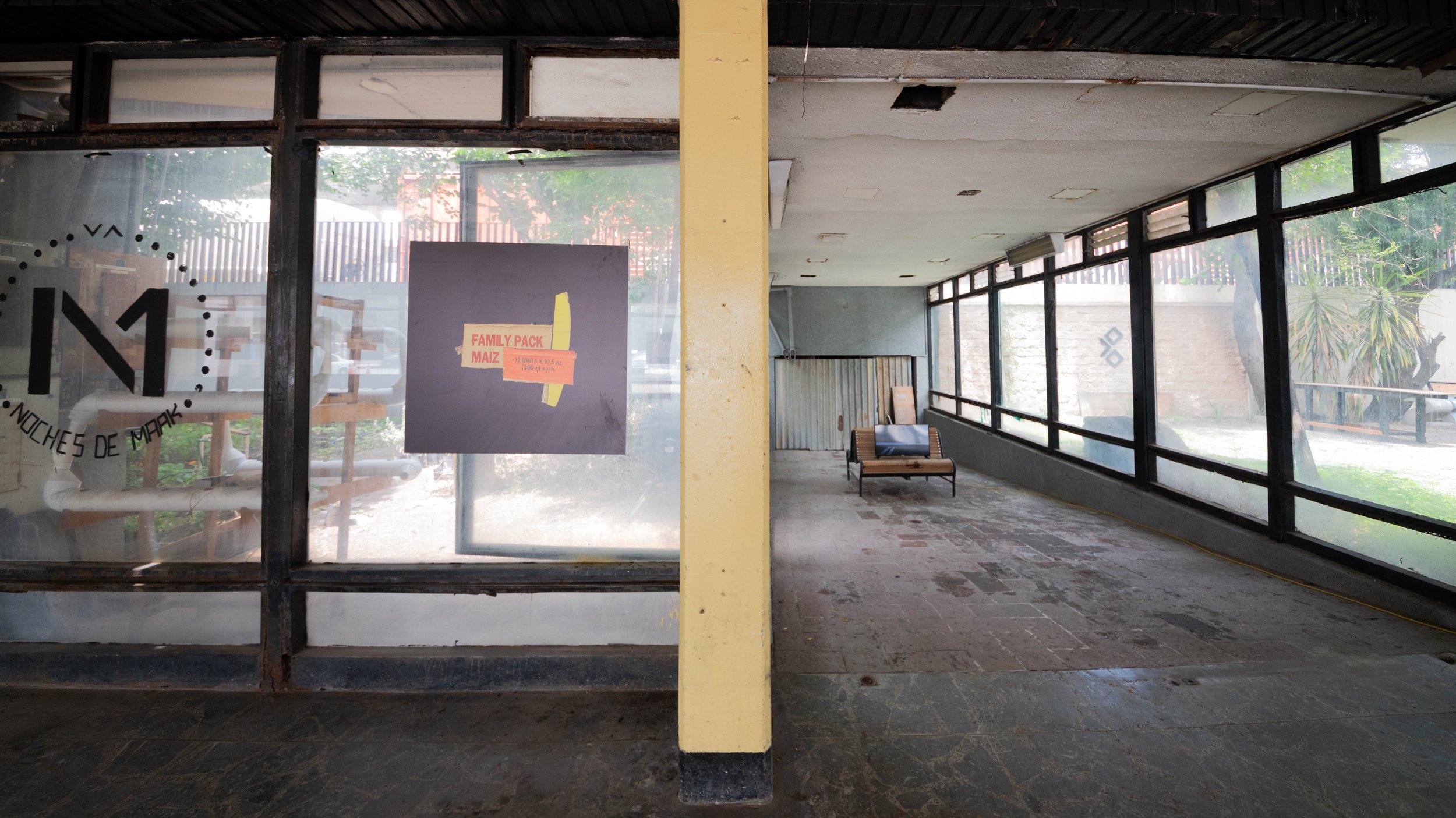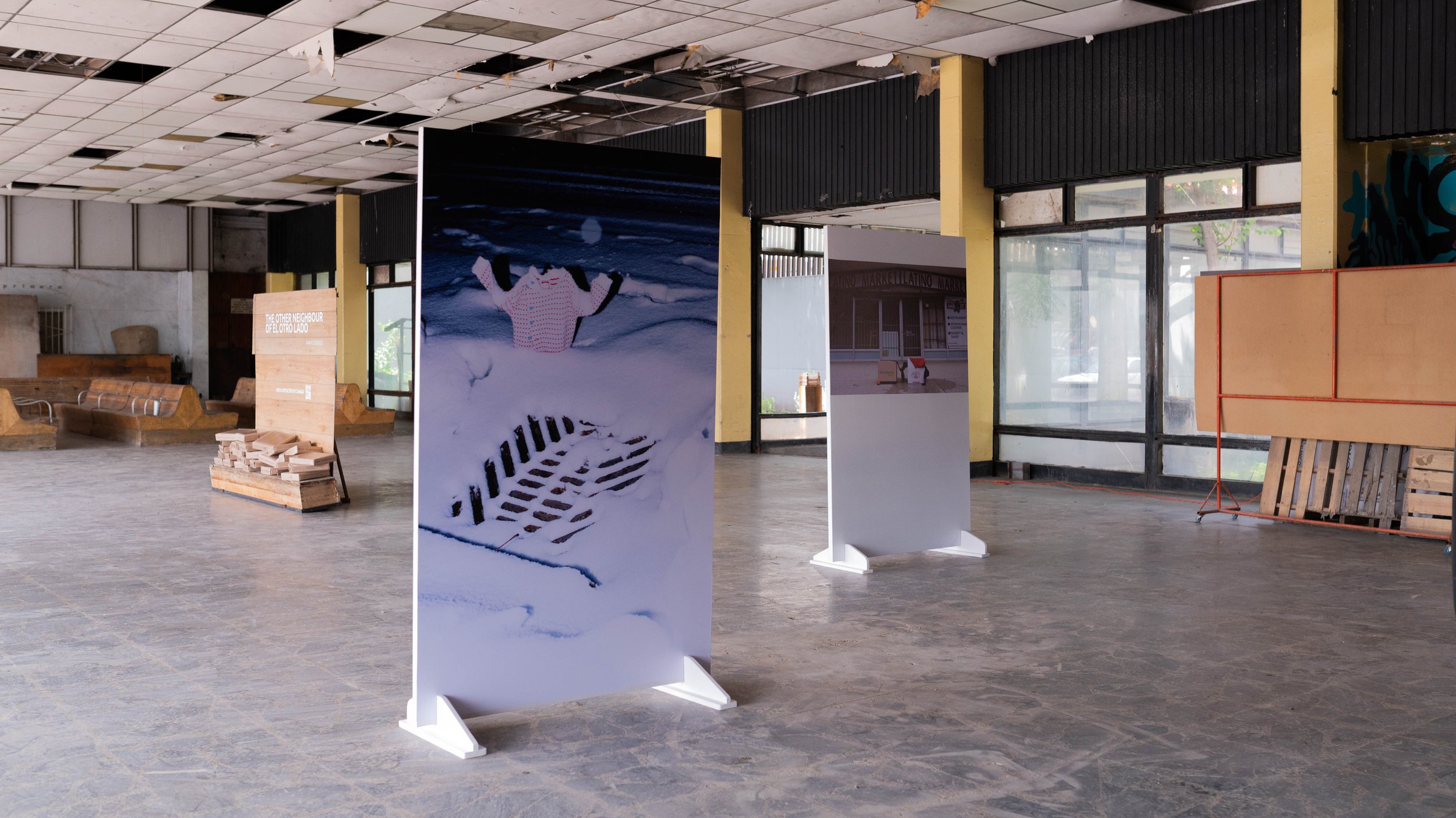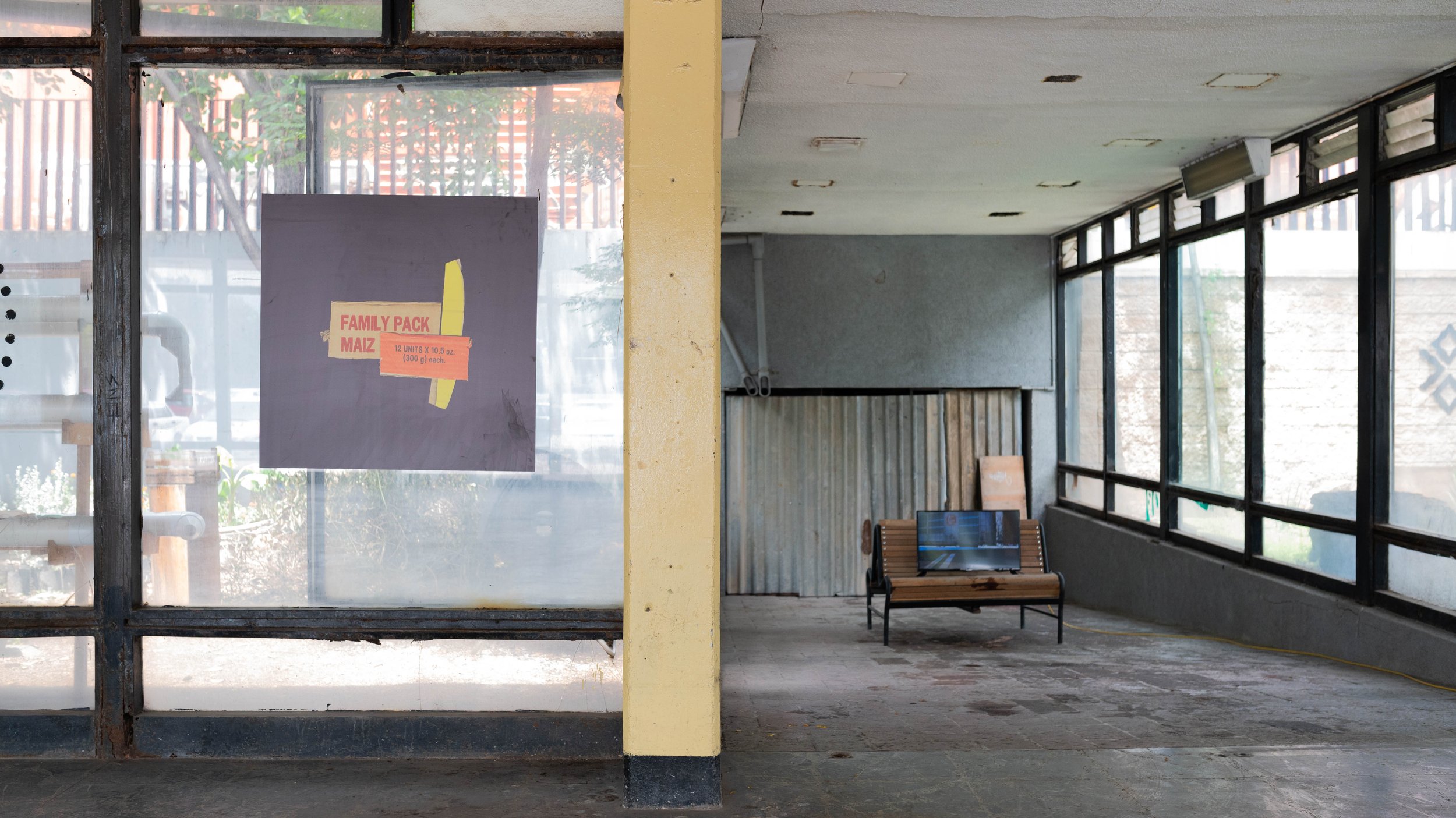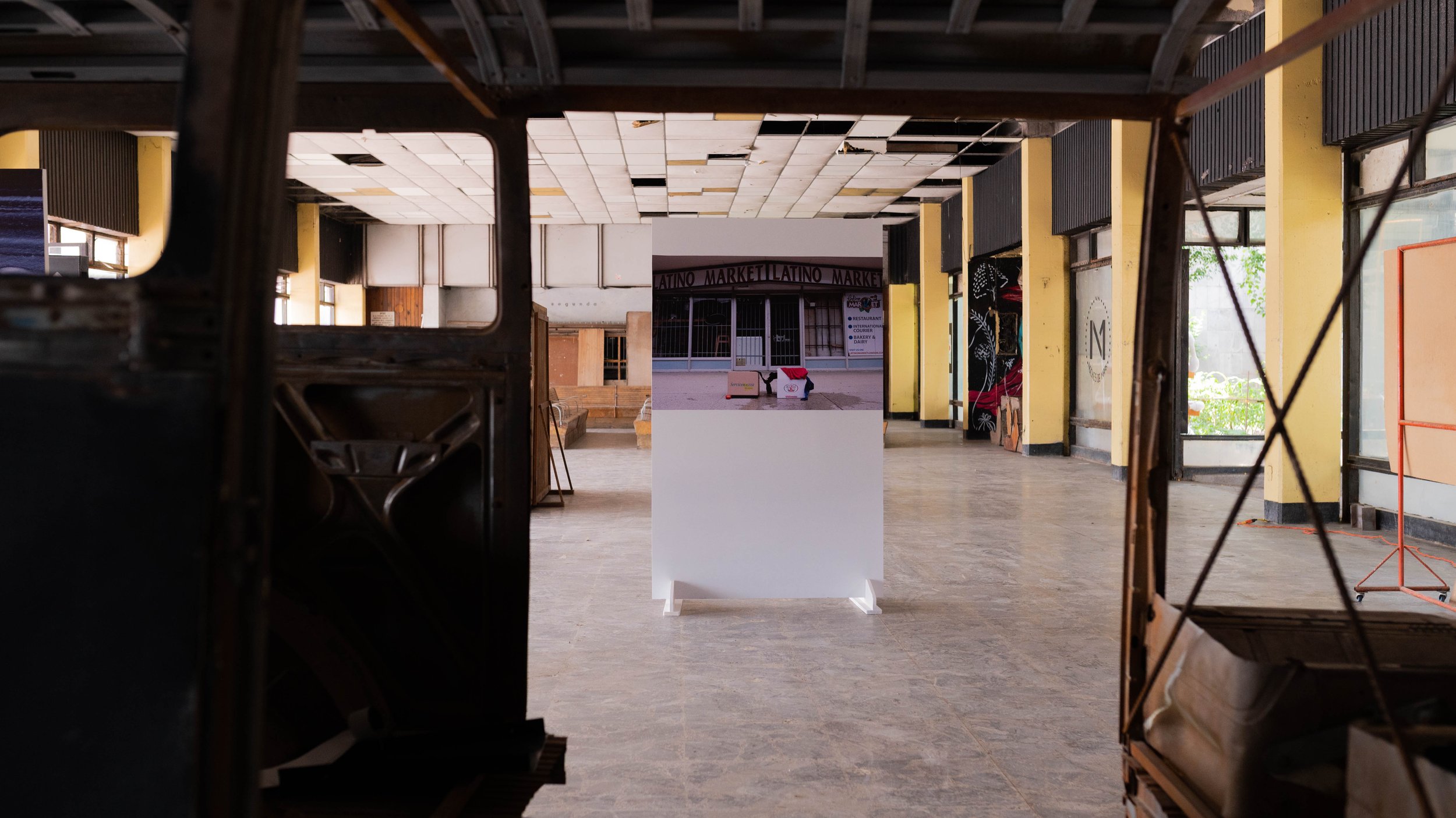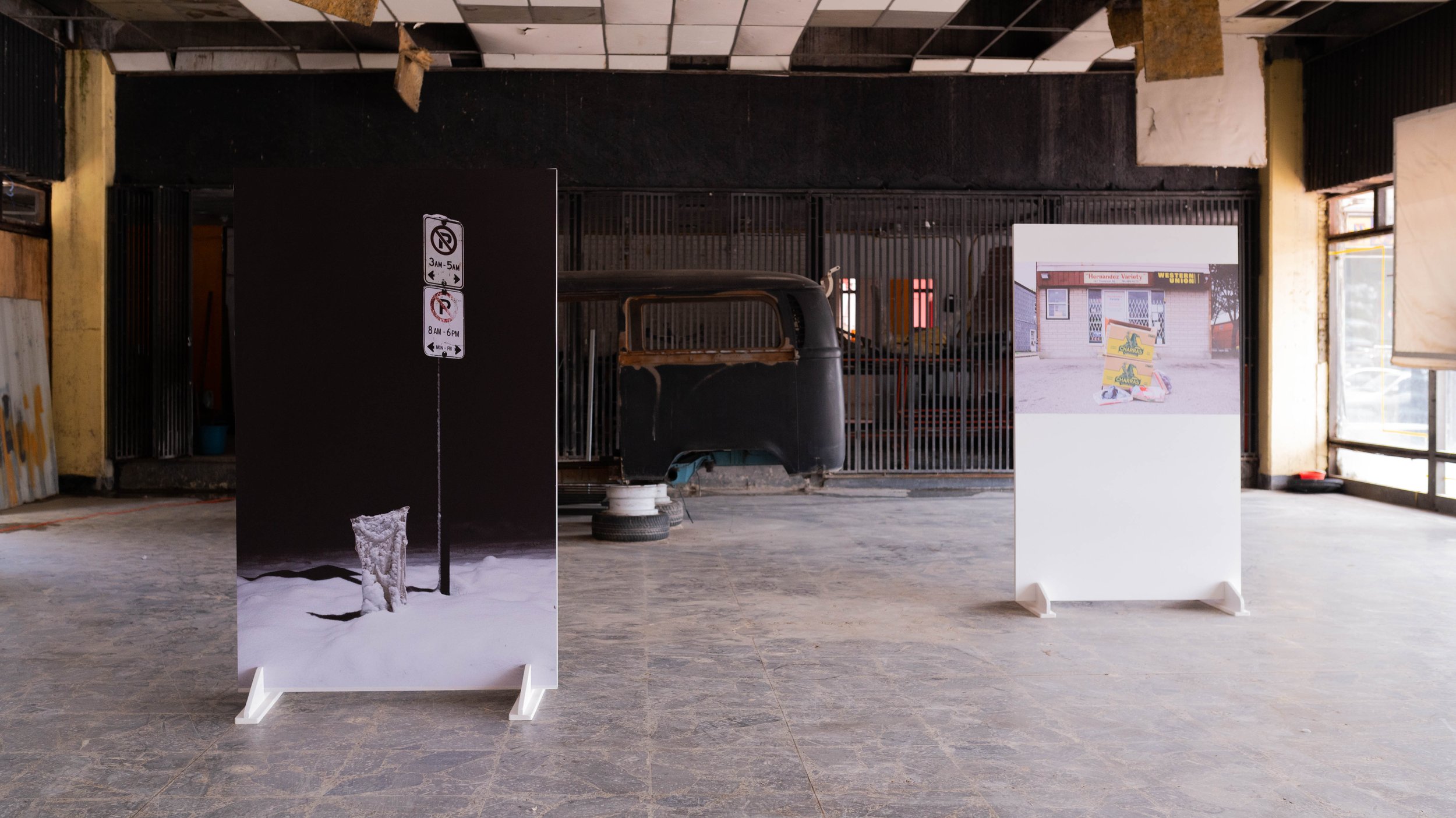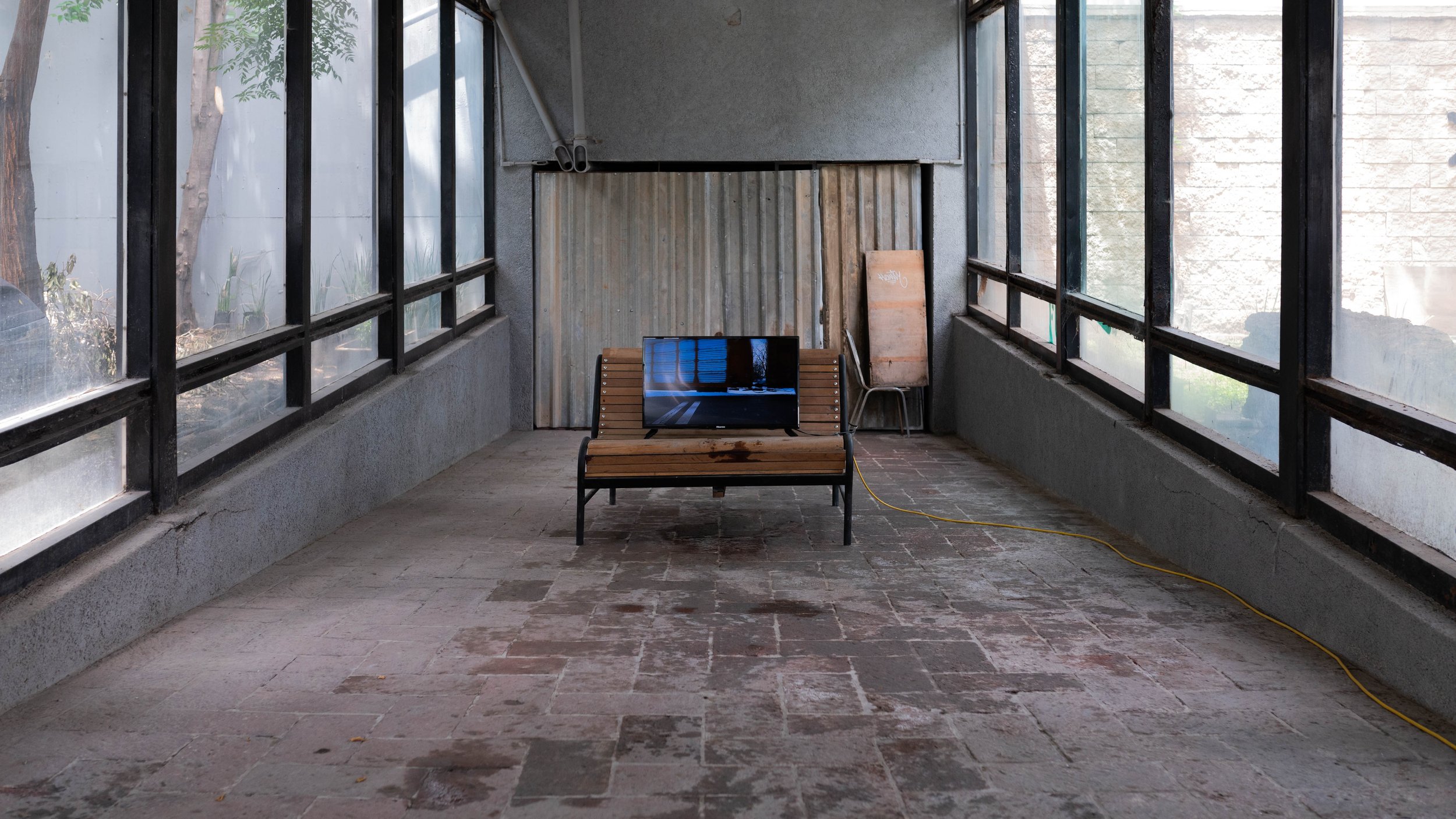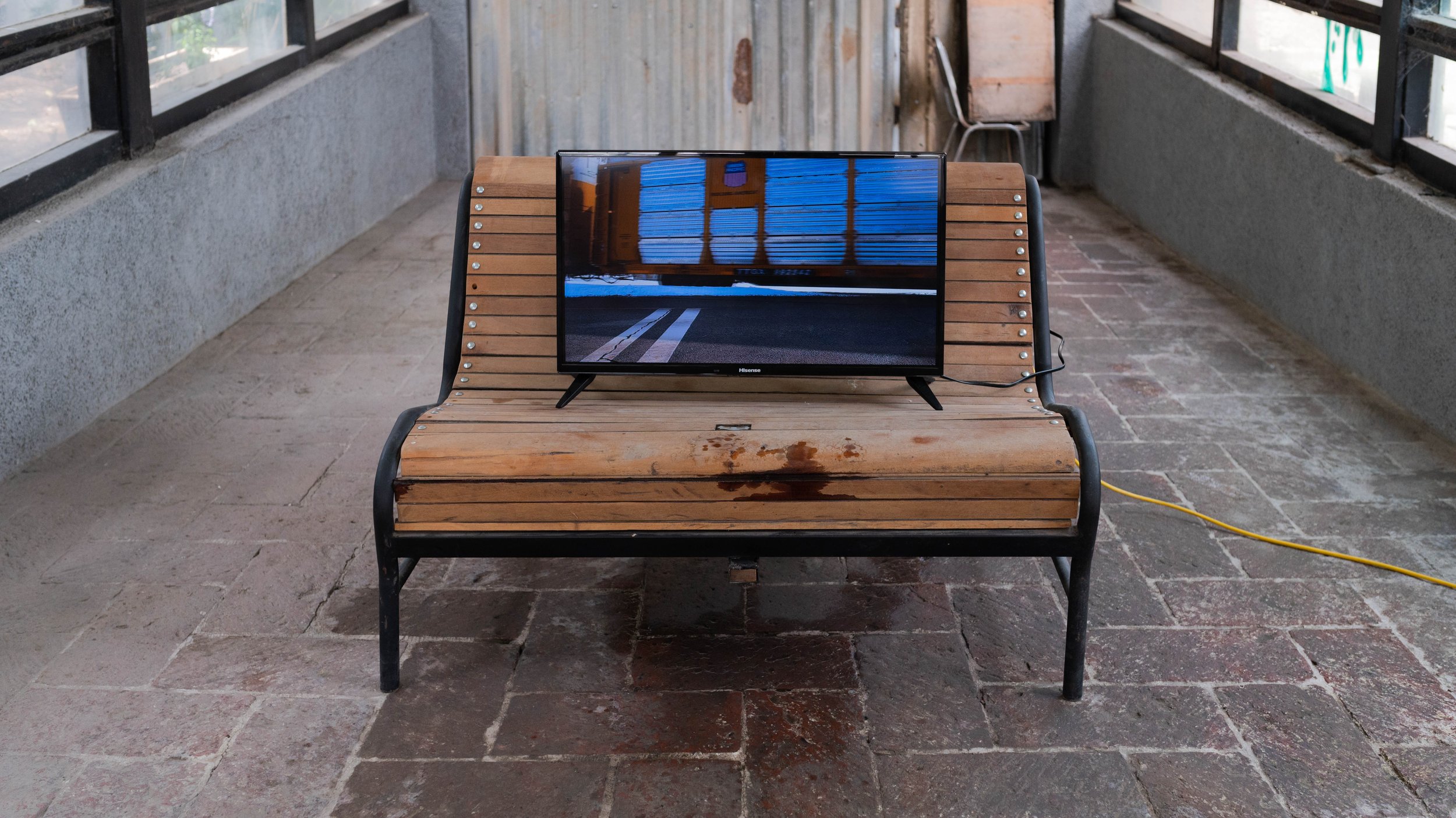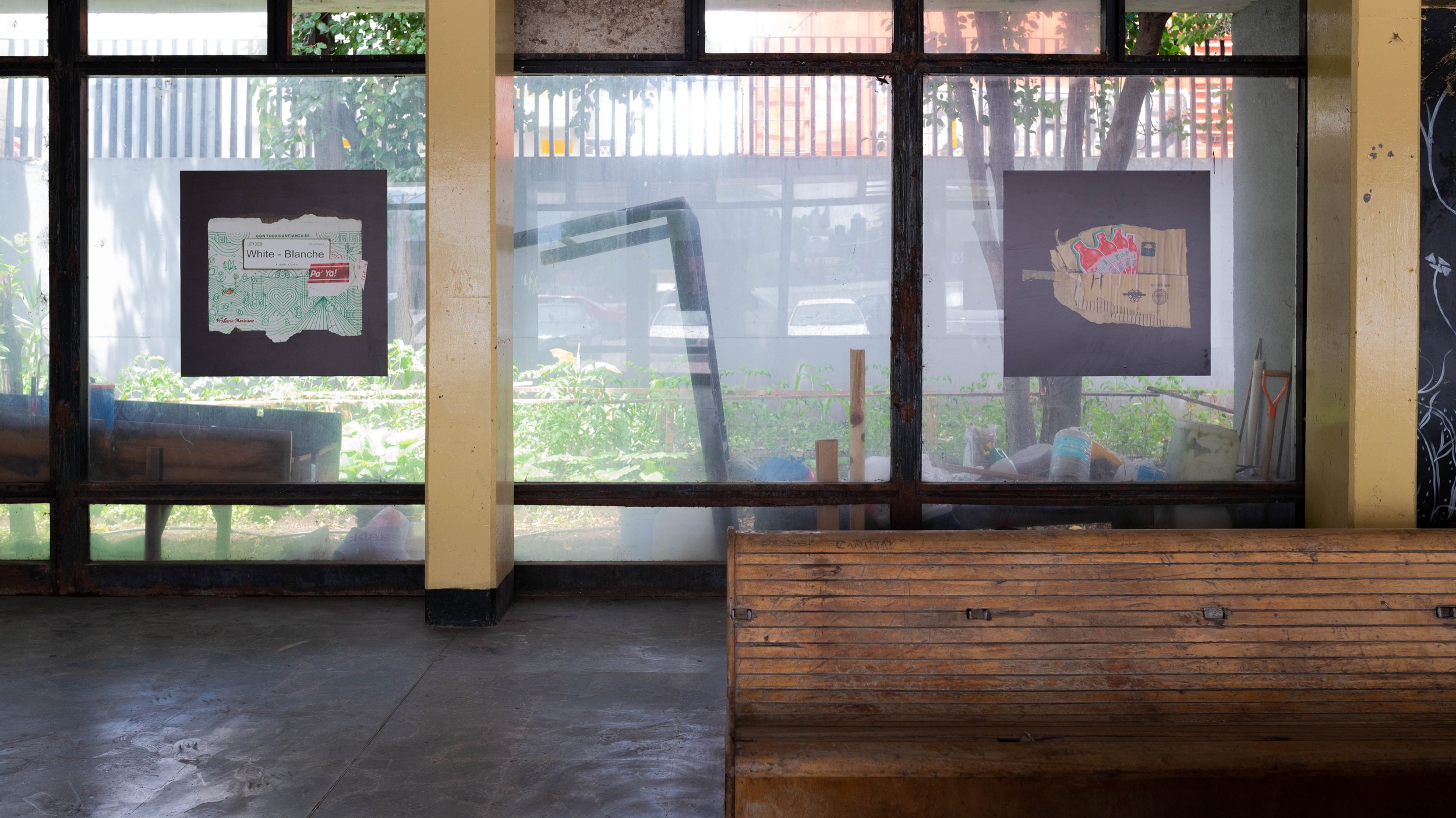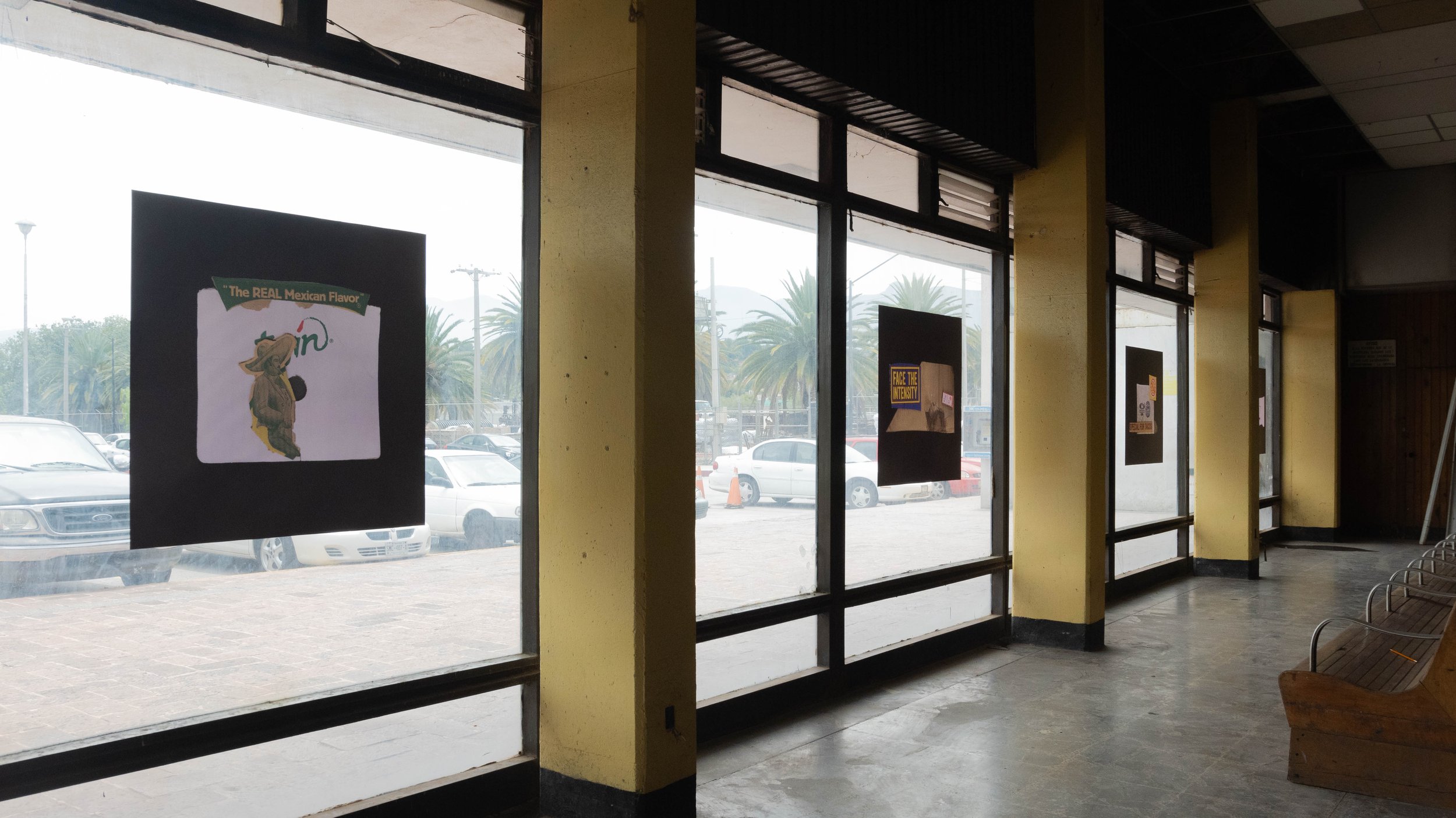The Other Neighbour of El Otro Lado
The Other Neighbour of El Otro Lado explores themes of Mexican migration in Canada, engaging with ideas of human labour and various indexes of Mexican culture, trade, and economic exchange. With two simultaneous exhibitions in two locations: the Artlab (London, ON, Canada) and El NODO (Saltillo, COAH, Mexico), the show echoes the importance of creating a visual narrative between both countries to decenter the United States narrative concerning Mexican migration.
Working with cardboard boxes from Latin Markets in Ontario as a sign and cipher of an absent subject of labour, González brings attention and critiques to how the system of powers perceives Mexican labour as mobile, multi-purpose, temporary, and disposable.
The Other Nehibour of El Otro Lado, ArtLab, London, Ontario, Canada
The Other Nehibour of El Otro Lado, El Nodo, Saltillo, Coahuila, Mexico
Essay/Artists' Multiple
Text: Andreas Buchwaldt
Editing: Ruth Skinner
Translation: Maria Laura Flores Barba
Screen printing: Jessica Woodward
“Artist and PhD candidate Andreas Buchwaldt explores the geographic and sociopolitical contexts of Anahi’s work in an excellent essay. Responding to Anahi’s subject matter, Andreas has designed the text to interface with a cardboard box. The essay has been translated into Spanish by PhD candida Maria Laura Flores Barba (Dept of Languages and Cultures).” (Visual Arts Department, 2021)
Español
Rastrear líneas de suministro es un acto revelador. Durante años, los migrantes latinoamericanos han viajado sobre el tren hasta la frontera con Estados Unidos para luego buscar su propio camino a pie. Los pasajeros son indocumentados, viajan sobre los vagones o entre ellos, en una peligrosa ruta que ha cobrado muchas vidas. Uno de los puntos donde los viajeros abordan el tren es Saltillo, Coahuila, una ciudad industrial al Norte de México. Mientras los migrantes parten, los trenes se cargan de mercancías producidas en Saltillo y destinadas a su venta en Estados Unidos o Canadá. Un sistema que permite el libre tránsito de productos entre países, pero se lo niega a los que buscan inmigrar, es un claro ejemplo de cómo se privilegia el comercio sobre las vidas humanas. Nada sorprendente viniendo del proyecto colonial que es Norteamérica.
Anahí González nació en Saltillo y fue testigo de las danzas entre los viajeros y los vagones de carga durante sus años de formación. Su exposición, The Other Neighbour of El Otro Lado, es una lectura crítica de esta dinámica sociopolítica. Los objetos mostrados en fotografías y video, así como los mostrados en forma de esculturas ready-made, vienen de la línea de suministro de la red ferroviaria. Su serie fotográfica Como que estoy y no estoy, captura los puestos de comida ambulantes que se instalan alrededor de las vías en Saltillo. Las imágenes de Vecino(s) documentan lo que pasa al otro lado del camino, al presentar narrativas visuales sobre y por inmigrantes mexicanos en Ontario. El video en cámara lenta Long-Term Flows, conecta todos los nodos al documentar un segmento de la lenta marcha del tren hacia el Norte. Los migrantes mismos están ausentes de la exposición. En su lugar, se alude a su presencia en la instalación escultórica Cajitas, hecha de hatajos de cajas de cartón usadas para transportar mercancía mexicana de exportación. La artista ha viajado a los mercados de comida latina en el sur de Ontario para recolectar estas cajas y ponerse en contacto con las comunidades que se han formado lejos de casa.
En conjunto, el trabajo de González confronta los prejuicios creados alrededor del cuerpo mexicano, al mismo tiempo que provee distintos puntos de vista para entender el trabajo de los migrantes. Mucho de cómo se ve México desde fuera es producto de la visión occidental construida durante varios siglos, generalmente denominada como costumbrismo. Esta visión incluye desde romantizaciones inocuas hasta ideologías perniciosas. El costumbrismo mexicano puede comenzar con imágenes inocentes como sombreros, calaveras y diseños “aztecas” para terminar en el sistema de explotación agrícola. Busco imágenes sobre “Mexican worker” desde una dirección IP canadiense, y me aparece un mosaico de campesinos encorvados sobre sembradíos abrasados por el sol. Podemos asegurar que, en la gran mayoría de estas imágenes, los campesinos trabajan en tierras extranjeras. También podríamos asumir que a la gran mayoría se les paga el salario mínimo (o menos) y están a merced de prácticas laborales depredadoras, tanto americanas como canadienses. Todas estas suposiciones y condiciones precarias sirven para limitar el poder y potencial de los mexicanos en la imaginación global. En este sentido, The Other Neighbour of El Otro Lado es un retrato condensado y una deconstrucción de un sistema desigual. Es tarea del espectador crear nuevas y más positivas asociaciones y agencias.
Así como los viajes se componen de dos puntos, inicio y final, también lo hace la exposición de González. Exposiciones simultáneas en Canadá (ArtLab, Western University en London, ON) y México (El Nodo Estación Creativa, Saltillo, Coah.), ciñen las ideas en juego. La voz de la artista llama desde su primer hogar y el eco le contesta desde el segundo.
“… el primer paso en la evolución de un discurso civilizado radica en el acto de negarse a identificar el desastre con la población sobre la que se produce.”- Ariella Azoulay (Civil Imagination: A Political Ontology of Photography, 2012)
English
Tracing supply lines is a revealing act. For years it has provided transit for Latin American peoples to the United States border, from which point travelers must find their own way across. The passengers are undocumented, riding atop or in between train cars on a dangerous route that has claimed many lives. A common jumping-off point for the train riders is Saltillo, Coahuila, an industrial city in Northern Mexico. Whereas riders may be departing, goods produced in Saltillo are often being loaded on, bound for markets in the United States or Canada. A system that allows for products to flow freely between countries but denies would-be-immigrants is a clear example of commerce being privileged over human lives. It is not a surprising notion coming from the colonial project that is North America.
Anahí González was born in Saltillo and saw the dance between train-hoppers and freight play out in her formative years. Her exhibition, The Other Neighbour of El Otro Lado, is a critical reading of this socio-political dynamic. The objects, depicted in photographs and video, and on display as ready-made sculptures, come from the railroad network supply line. Her photographic series Como Que Estoy Y No Estoy captures the unregulated food stalls that spring up around Saltillo’s rail hubs. The images of Vecino(s) document what happens at the other end of the journey, presenting visual narratives of and from Mexican migrants in Ontario. The slow-moving video work, Long-Term Flows, ties the nodes together, documenting a segment of the train’s laboured crawl north. Noticeably absent from the exhibition are the migrants themselves. Instead, their presence is alluded to in the ready-made sculptural installation Cajitas, made from stacks of cardboard boxes used to transport Mexican exports. The artist has been travelling to Latin America food Markets in southern Ontario to collect these boxes, while also connecting with the communities that have formed far from home.
All together, González’s works confront the harmful stereotypes that have formed around the Mexican body, while at the same time providing alternate ways of understanding migrant labour. Much of how Mexico is viewed abroad comes from Western constructions centuries in the making, often collectively referred to as Costumbrismo. These views range from innocuous romanticizations to outright damaging ideologies. Mexican Costumbrismo might begin with benign images of sombreros, calavera, and Aztec print, only to arrive at the plantation. I search for images of “Mexican labour” from a Canadian IP address and I am confronted by a mosaic of present-day field workers hunched over sun-soaked crops. We can be sure that in the vast majority of these images the workers are on foreign soil. We can also assume that the vast majority are being paid near minimum wage (or less) and are at the mercy of predatory labour practices, both American and Canadian. All of these assumptions and precarious conditions serve to limit the power and potential of Mexican people in the global imagination. In this regard, The Other Neighbour of El Otro Lado is a condensed portrayal and deconstruction of an unbalanced system. It becomes the viewer’s task to form new and more positive associations and agencies.
As with a journey that has two points, beginning and end, so too does González’s exhibition. Simultaneous shows in Canada (ArtLab, Western University in London, ON) and Mexico (El NODO Cultural Centre, Saltillo, COAH) bracket the ideas at play. The artist’s voice calls out from her first home and echoes back from her second.
“...the first step in the evolution of a civil discourse lies in the act of refusing to identify disaster with the population upon whom it is afflicted.” - Ariella Zoulay (Civil Imagination: A Political Ontology of Photography, 2012)
Special Event:
Artist's Walkthrough in Spanish with Anahí González and Visual Arts Department Chair, Alena Robin
Friday, August 6 at 2:00pm
Limited to 50 visitors
A one-time event, offered in Spanish only, to tour through The Other Neighbour of El Otro Lado with artist Anahí González and Visual Arts Department Chair Alena Robin.
To attend this walkthrough, please reserve your spot using the form below or visit the event's booking page.





























